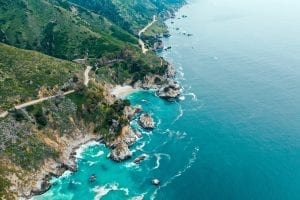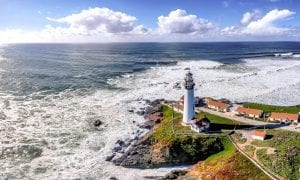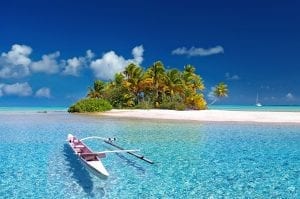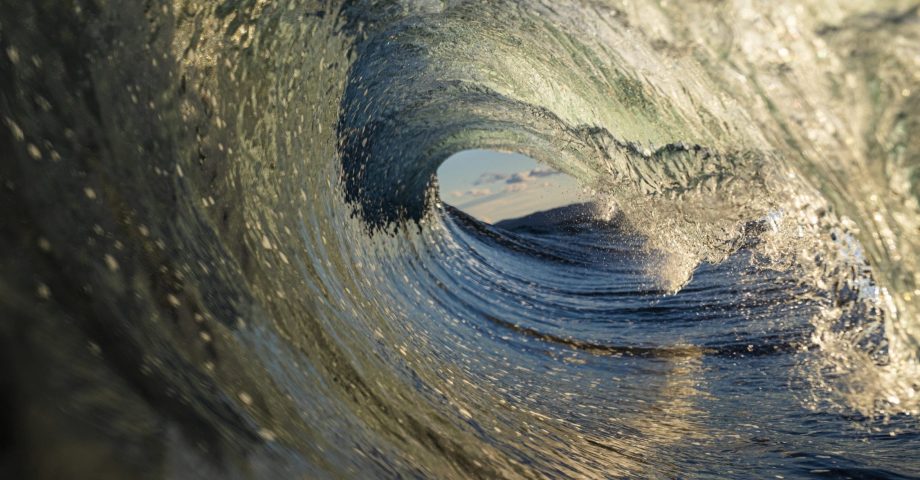The Pacific Ocean has been a source of fascination for centuries. Many adventurers have explored this expansive body of water, whether to discover new lands or determine how large it is. To this day, the Pacific Ocean still holds people’s attention. Dive deep into these fun facts and discover why.
Fast and Fun Facts about the Pacific Ocean
Etymology
The Pacific Ocean got its current name from the Portuguese explorer Ferdinand Magellan. He dubbed the ocean Mar Pacífico, which translates to “peaceful sea.” The explorer was inspired by the waters’ calmness and the favourable winds.

Geography
An interesting fact about the Pacific Ocean is that it’s considered the largest and deepest saltwater body on Earth, encompassing one-third of the Earth’s surface. It is followed by the Atlantic Ocean and the Indian Ocean, respectively,
- The Pacific Ocean has a surface area of 165,200,000 km2(63,800,000 sq mi), stretching from the Antarctic to the Arctic, between Asia and Australia, and North and South America.
- The Pacific Ocean is divided into the North Pacific Ocean and the South Pacific Ocean by the Equator.
- The Pacific Ocean is the world’s deepest ocean, encompassing the Mariana Trench, which has a depth of 10,984 metres (36,037 feet).
- The Pacific Ocean, at its deepest area, has pressure coming in at a crushing 8,000 psi.
Weird Scientific Facts about the Pacific Ocean
The sheer expanse of the Pacific Ocean has made it a popular subject for scientists and science enthusiasts. The ocean’s vastness and depth have made it one of the world’s most diverse habitats.
Water Characteristics
- The Pacific Ocean contains 50.1 per cent of the world’s free water, making it the largest ocean basin.
- It has varying levels of salinity. Its southeastern area has an average salinity of 37 parts per thousand, while its northern area only has an average salinity of 32 parts per thousand.
- Its surface water has varying temperatures, ranging from −1.4 °C (29.5 °F) to 30 °C (86 °F), depending on the location.
Ocean Life
The Pacific Ocean is home to several types of marine species, from animals to plant life. Discover the weird and interesting facts about them and their habitats.
- The Pacific Ocean is home to atolls, otherwise known as ring-shaped coral reefs surrounded by a lagoon. Most of the Earth’s atolls are located in the Pacific because they thrive in warm tropical ocean waters.
- It has a vast forest of marine plants underwater. These plants are the source of 70 per cent of the Earth’s oxygen.
- It is home to over 200,000 marine species; experts say there are 500,000 to 2 million species still unknown.
- The Pacific Ocean has an area called the “White Shark Café.” Located off the coast of Baja California, Mexico, several sharks hang out here regularly.

Geology
An interesting fact about the Pacific Ocean is that it evolved during the Mesozoic period. This has made it one of the oldest and most diverse bodies of water. In addition, the Pacific has rivers, lakes, volcanoes, and waterfalls underneath the water.
- The Pacific Ocean is home to the “Ring of Fire,” a sequence of volcanoes that encircle its basin. The activity from these volcanoes contributes to 90 per cent of the Earth’s annual earthquakes.
- It is shrinking because of the movement of its oceanic plates. According to experts, these plates have moved by 0.5 km2 per year for the last 180 million years. Meanwhile, the Atlantic Ocean is expanding because of the tectonic plates underneath it.
- It is the source of the world’s toughest typhoons. In the western Pacific, the warmer water creates the ideal conditions for intense and frequent typhoons.
- It is home to the Great Barrier Reef. This reef, stretching more than 2,300 km (1,429 miles), is a preserved UNESCO World Heritage Site for its multiple habitats.
The Pacific Ocean is home to most of the world’s islands, with the current count at 25,000. These include Fiji, Hawaii, Indonesia, the Philippines, Japan, and New Zealand.
Other interesting facts about the Pacific Ocean
Now that you have a better idea of how the Pacific Ocean works, it’s time to look at what’s happening in its waters.

Environmental Issues
- The Pacific Ocean holds about a third of the Earth’s plastic pollution, with an estimated mass of 80,000 tons. The ocean has an area called the “Great Pacific Garbage Patch”, which houses most of this pollution.
- The Pacific Ocean is a cemetrey for satellites and spacecraft that have been removed from orbit. These are the debris left over after most satellites or spacecraft burn up upon re-entry into the atmosphere.
- It absorbs 30 per cent of the Earth’s carbon dioxide. This has caused the Pacific’s pH levels to drop by 0.1 pH units, making it 30 per cent more acidic than before industrialisation.
- The Pacific Ocean is a primary source of livelihood as it is home to most of the world’s population of fish. However, irresponsible practices have resulted in ruined habitats and overfishing.
The Pacific Ocean is everyone’s responsibility. Learning more about this massive body of water can help you understand it better and discover how to protect it for future generations.
FAQs about The Pacific Ocean
Do planes fly over the Pacific Ocean?
No - they tend to avoid flying over the water mainly because it’s quicker to travel elsewhere, via the curve, rather than in a straight run.
How many animals live in the Pacific Ocean?
Believe it or not, almost 229,000 known animal species call the Pacific Ocean home!
What is the Pacific Ring of Fire?
The Pacific Ring of Fire refers to an active band of volcanoes that lines part of the ocean. It’s all called the Circum-Pacific Belt.
Do you know any fun facts about The Pacific Ocean? Share them in the comments below!










